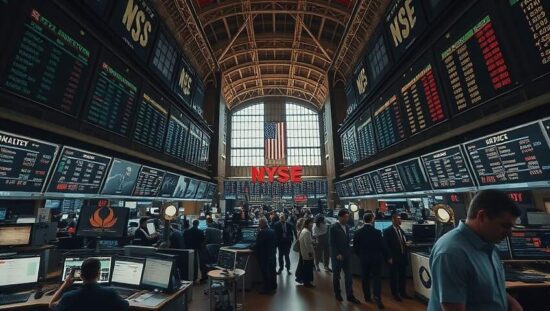The German flagship index, the DAX, opened Tuesday with significant losses, reflecting broader anxieties gripping Asian markets and sparking renewed debate about the sustainability of recent gains. The index was calculated at approximately 23,780 points around 9:30 am, representing a 1.5% decrease from Monday’s closing level. While Merck, Beiersdorf and Symrise led the gainers, Rheinmetall, FMC and Infineon faced downward pressure.
Despite a positive start to the trading week previously, the DAX remains largely stagnant, exhibiting what analyst Thomas Altmann of QC Partners describes as a prolonged “sideways market with a search for direction”. Year-to-date, the index’s performance is a meager 0.9% increase, with a near-even split of positive and negative trading days out of the 90 sessions thus far. This lack of clear momentum is increasingly viewed as a precarious situation, particularly given the broader international context.
Altmann highlighted palpable nervousness across Asian exchanges, attributing it to a pause in what he termed the “impressive and even frightening” recent rally. He noted the significant rise in implied volatilities, a key indicator of market uncertainty, coinciding with the price surge. This suggests investors are now factoring in a greater potential for downside risk. The volatility index for the South Korean KOSPI 200, for example, has reached its highest level since the trade war-induced turbulence of April.
The current market conditions are fueling louder warnings about inflated valuations and the potential for a corrective downturn. Altmann specifically pointed to the Nasdaq 100’s price-earnings ratio, currently standing at 35 – an eleven-point increase above its 15-year average. This level mirrors figures last seen in the late stages of 2021, a period followed by a disappointing start to 2022. The comparison underscores concerns that the market might be vulnerable to a similar correction.
The euro strengthened slightly against the US dollar, trading at $1.1524, a movement often interpreted as reflecting investor sentiment regarding the relative strength of the European economy. Conversely, the price of Brent crude oil decreased, falling to $64.28 per barrel, indicating potential concerns about global demand and potentially contributing to the broader market hesitations. The confluence of these factors raises questions about the long-term viability of current market valuations and signals a period of heightened scrutiny for investors.





